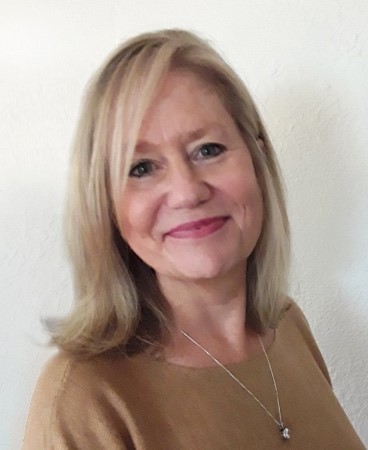American Psychological Association Division 50
Shifting Contexts, Shifting Substance Use: Why is My Use Increasing During the COVID-19 Pandemic and What Can I Do About It?



Samuel F. Acuff1, Jalie A. Tucker2, & James G. Murphy1
1 The University of Memphis, Department of Psychology, Memphis, TN, 38152
2 The University of Florida, Department of Health Education and Behavior, and Center for Behavioral Economic Health Research, Gainesville, FL 32611 USA
Growing concerns in early 2020 about the COVID-19 pandemic forced governments around the world to institute varying degrees of stay-at-home and physical distancing orders. Almost overnight, we experienced unprecedented reductions in critical sources of reward such as social interaction, physical activity, and accomplishment through work, school, and leisure activities and hobbies. This occurred in conjunction with a drastic increase in stress related to our health and financial well-being.
In November 2020, we published a paper in Experimental and Clinical Psychopharmacology delineating a behavioral economic model predicting increases in substance use during the pandemic (Acuff et al., 2020). Although there are several behavioral economic models, the dominant model in addiction research combines principles from microeconomics and operant psychology to understand decision making and choice behavior. From this perspective, substance use is most likely when (a) the immediate costs of use are low and access is high, (b) the choice environment has limited rewarding substance-free alternatives, and (c) individuals have a relatively greater tendency to prefer immediate rather than delayed rewards. The model thus presumes that the choices to use substances are contextually dependent on the other available alternatives in the choice context and on the constraints on access to them.
Behavioral economics predicts that the necessary public health pandemic response creates a “perfect storm” for exacerbation of harmful substance use, as it decreases the costs of use, increases the costs of alternatives, and creates uncertainty and scarcity. Many people now work remotely, which tends to reduce constraints on substance use. Liquor stores and restaurants are delivering alcohol, decreasing the effort necessary to obtain it. Other contingencies that reduce drinking, such driving home from a bar, are less likely to apply. Substance use is normally counterbalanced with other substance free rewarding activities, such as exercising and attending religious services, but social distancing restrictions have prevented or reduced such activities, resulting in substance use taking up a larger portion of the constricted “reward pie.” The pandemic is also breeding stress and loneliness, and alleviating negative emotions is a common motive for substance use. Many costs of substance use are long-term in nature; yet the pandemic context makes it difficult for many to envision life in two months, much less in two years or more. Collectively, in a sizeable minority of the population, these contextual changes are fueling increases in substance use and related harms (e.g., opioid overdose; Niles et al., 2020; Pollard et al., 2020) and are primarily affecting those impacted by contextual risk factors highlighted by behavioral economics, including decreased income (Huckle et al., 2020), working remotely (Szajnoga et al., 2020), depression (Wardell et al., 2020), anxiety (Stanton et al., 2020), ordering alcohol online (Callinan et al., 2020), and low social support (Lechner et al., 2020). At the same time, although telehealth services have been increasing, the pandemic has decreased access to mental health services for many already struggling with substance use in part because of the loss of employment and insurance coverage.
Fortunately, the behavioral economic model points to recommendations across the intervention spectrum to “flatten the substance use curve.” The most effective interventions will (a) increase the perceived costs of substance use; (b) enrich the environment and reduce costs of substance-free activities; (c) shift the time frames for behavioral allocation by reducing delay discounting and increasing future orientation; and (d) create environments and choice contexts that promote beneficial choices and outcomes without restricting freedom of choice (“choice architecture”). Existing efficacious interventions leverage these intervention targets, such as brief motivational interventions (and supplements such as the Substance-Free Activity Session), contingency management, community reinforcement approach, and LET’S ACT (Coughlin et al., 2021; Fazzino et al., 2019). Moreover, as suggested below, individuals in need and service providers are encouraged to find their own unique ways to manipulate the substance use cost/benefit ratio to favor substance-free activity engagement over harmful substance use.
1. Increase the perceived cost of the substance. Don’t stockpile. If you choose to drink, purchase only enough to last a specified time between grocery store trips rather than keeping extra in the house.
2. Maintain a schedule and temporal structure of activities. Working remotely imposes less constraints on activities, not only on substance use, which can be disorganizing and disorienting over time. Developing and maintaining routine daily and weekly activities and responsibilities can help increase the opportunity cost for substance use. Don’t be afraid to suit up if that’s how you used to dress and plan safe relaxing or essential transition activities between the end of the workday and the evening that reflect your pre-COVID routines.
3. Change your personal micro-environment. Individuals can arrange their personal space and sequence of activities in ways that promote and commit them to healthy choices earlier in the day or week that minimize the likelihood of later substance use. Examples include making standing dates for Zoom calls in the evening with family and friends who are not substance users; participating in virtual or physically distanced group exercise classes that are incompatible with substance use; attending religious services online; taking relaxing outdoor walks in the early evening to delay the start of any evening substance use; cleaning and decorating one’s personal space in restful ways and designating a spot for meditation; placing interesting books, games, or puzzles in ready view; and getting a pet. Even small changes can serve as attractive nudges that deter harmful substance use.
4. Make contact with what you care about. During the pandemic, it can be hard to focus on what matters, but one positive aspect for many is the gift of time to reflect and plan for the future. Take a moment each day to think about what you care about and who you want to be. When considering using a substance, ask yourself if this instance of use is going to bring you closer to or farther away from whom you want to be. Consider a formal values assessment with a professional to help identify values and tangible ways to pursue them. It is also a time of expanded opportunities to invest in and nurture relationships with immediate family members and close friends that will likely yield enduring benefits.
5. Develop ways to experience pleasure and alleviate boredom while social distancing. When choices to use substances only compete with few other activities, substances will eventually be chosen. Thus, it is important to increase daily activities, particularly those that are goal-directed, to diversify rewards—e.g., cook good food or read a good book; spend time doing crafts, hobbies, puzzles, or volunteer work; go outdoors and enjoy nature; safely interact with others online or by telephone. Consider learning a new skill, language, or musical instrument. Activities that require mental or physical effort and that are incompatible with substance use are especially helpful (e.g., playing chess vs. watching movies). Take up meditation and try mindfully eating a piece of candy to enhance pleasure.
6. Be physically active. Many gyms and parks have restricted access, increasing the perceived costs of exercise and other physical activities. The solution? Increase the benefits and decrease the costs and find new ways to be physically active. Schedule remote or live workout sessions with friends and schedule drug-free rewards following the workout (e.g., social hour). Grow a garden, which can range from potted planters on an apartment deck to an outdoor backyard oasis, or cultivate a cactus, orchid, or other indoor houseplant collection.
7. Join a remote recovery or support group. Many people have reduced access to recovery resources like in-person mutual help groups. Virtual groups and other online resources, such as SMART recovery or online forums, have rapidly developed and can be helpful in creating social networks of other people who are also trying to reduce their use.
The pandemic will eventually recede as the driving force in our lives. Behavioral economics highlights the value of day-to-day choices and behavior patterns, as outlined above, and maintaining a “future forward” frame of reference to support current choices that lessen short and longer-term negative effects of the pandemic environment and position individuals to pick up their lives post-pandemic from a good place.
References
Acuff, S. F., Tucker, J. A., & Murphy, J. G. (2020). Behavioral economics of substance use: Understanding and reducing harmful use during the COVID-19 pandemic. Experimental and Clinical Psychopharmacology. https://doi.org/10.1037/pha0000431
Callinan, S., Mojica-Perez, Y., Wright, C. J. C., Livingston, M., Kuntsche, S., Laslett, A. M., Room, R., & Kuntsche, E. (2020). Purchasing, consumption, demographic and socioeconomic variables associated with shifts in alcohol consumption during the COVID-19 pandemic. Drug and Alcohol Review, 40(2), 183–191. https://doi.org/10.1111/dar.13200
Coughlin, L. N., Bonar, E. E., & Bickel, W. K. (2021). Considerations for remote delivery of behavioral economic interventions for substance use disorder during COVID-19 and beyond. Journal of Substance Abuse Treatment, 120(January), 108150. https://doi.org/10.1016/j.jsat.2020.108150
Fazzino, T. L., Bjorlie, K., & Lejuez, C. W. (2019). A systematic review of reinforcement-based interventions for substance use: Efficacy, mechanisms of action, and moderators of treatment effects. Journal of Substance Abuse Treatment, 104(February), 83–96. https://doi.org/10.1016/j.jsat.2019.06.016
Huckle, T., Parker, K., Romeo, J. S., & Casswell, S. (2020). Online alcohol delivery is associated with heavier drinking during the first New Zealand COVID-19 pandemic restrictions. Drug and Alcohol Review, August, 1–9. https://doi.org/10.1111/dar.13222
Lechner, W. V, Laurene, K. R., Patel, S., Anderson, M., Grega, C., & Kenne, D. R. (2020). Changes in alcohol use as a function of psychological distress and social support following COVID-19 related University closings. Addictive Behaviors, 110(January), 106527.
Niles, J. K., Gudin, J., Radcliff, J., & Kaufman, H. W. (2020). The Opioid Epidemic Within the COVID-19 Pandemic: Drug Testing in 2020. Population Health Management. https://doi.org/10.1089/pop.2020.0230
Pollard, M. S., Tucker, J. S., & Green, H. D. (2020). Changes in Adult Alcohol Use and Consequences During the COVID-19 Pandemic in the US. JAMA Network Open, 3(9), e2022942. https://doi.org/10.1001/jamanetworkopen.2020.22942
Stanton, R., To, Q. G., Khalesi, S., Williams, S. L., Alley, S. J., Thwaite, T. L., Fenning, A. S., & Vandelanotte, C. (2020). Depression, anxiety and stress during COVID-19: Associations with changes in physical activity, sleep, tobacco and alcohol use in Australian adults. International Journal of Environmental Research and Public Health, 17(11), 1–13. https://doi.org/10.3390/ijerph17114065
Szajnoga, D., Klimek-Tulwin, M., & Piekut, A. (2020). COVID-19 lockdown leads to changes in alcohol consumption patterns. Results from the Polish national survey. Journal of Addictive Diseases, 0(0), 1–12. https://doi.org/10.1080/10550887.2020.1848247
Wardell, J. D., Kempe, T., Rapinda, K. K., Single, A., Bilevicius, E., Frohlich, J. R., Hendershot, C. S., & Keough, M. T. (2020). Drinking to Cope During COVID-19 Pandemic: The Role of External and Internal Factors in Coping Motive Pathways to Alcohol Use, Solitary Drinking, and Alcohol Problems. Alcoholism: Clinical and Experimental Research, 44(10), 2073–2083. https://doi.org/10.1111/acer.14425
Do you have any recently published work that you wish you would have had more room in the manuscript to discuss clinical implications and applications? For this issue, we would like to focus on any cutting edge work you might have related to the etiology, prevention, or treatment of adolescent substance use. We would love for you all to share recently published work in this area and give us more information about how your research findings could be useful for clinicians. Please limit responses to 1,000 words and send to dana.litt@unthsc.edu by June 1, 2021.

Resources are available for those struggling with addiction and numerous effective treatments exist. Whether you are looking for help for yourself or a loved one, we encourage you to seek out help.